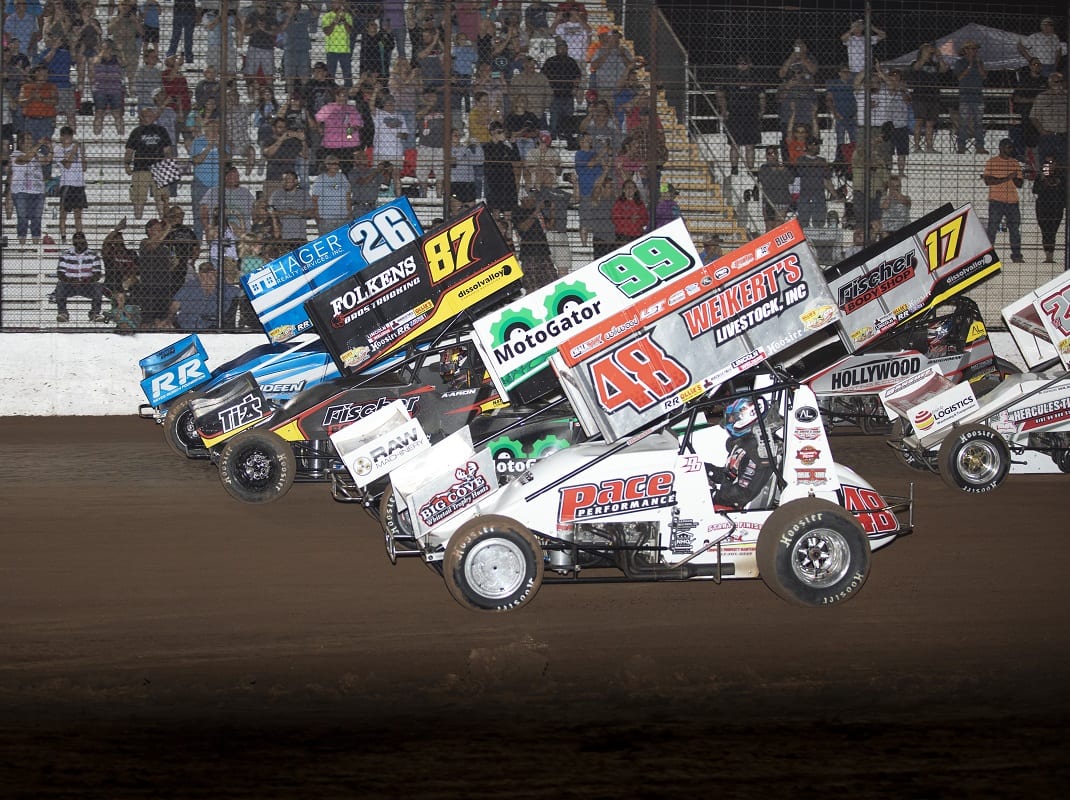That All Star swing — a doubleheader in South Dakota the final weekend in May before nine races in 11 days throughout Oklahoma, Kansas, Texas and Louisiana in early June — was created by series officials in an effort to make sure the full-time teams had the ability to make money as the entire spring schedule in Ohio and the Northeast had to be scrapped.
“We started having calls every Thursday with all our teams,” All Star Circuit of Champions Chief Operating Officer Jared Frood said. “Everybody was free to participate. There was some nervousness on both sides. Nobody knew what to expect. We were very up front with the teams. I think it was helpful to have conversations. They were asking, ‘Where are we going next?’ The problem we had is we didn’t know at the time. This was changing on a daily basis.”
Acording to Frood, the series “shared some of the risk” with the track during the doubleheader in South Dakota, but the races in the Midwest were normal shows, as are those remaining on the schedule.
He also noted that the series did not reduce the nightly purse.
“We promised our teams from the beginning when we had our weekly calls that nothing would drop lower than our $5,000-to-win purse,” he said. “We have no intentions of straying from the $5,000-to-win purse. For us it was important that we weren’t reducing purses for the teams. The expenses aren’t going down for the teams because of COVID-19. They have to pay the same bills. We have to pay the same bills.
“If we get to 32 races, we’ll pay our full point fund. Anything less would be prorated. Thirty-two is the magic number this year.”
The catalyst for sprint car racing’s return following the COVID-19 shutdown was likely a pair of races in the Midwest. Veteran driver Terry McCarl promoted a race at Park Jefferson Int’l Speedway in North Sioux City, S.D., on April 25.
Jackson Motorplex in Jackson, Minn., followed on May 15 by welcoming the Bumper to Bumper IRA Outlaw Sprint Series.
More than 55 drivers competed at the race that didn’t allow fans.
“We talked to a lot of the teams here for the IRA show and they were very thankful we opened up,” Jackson Motorplex general manager Doug Johnson said. “That was in mid-May and I think at that point everyone was excited to go race. Now, more and more tracks have opened up, but it’s still a struggle to find tracks that can have full capacity. I think there will be tracks that end up closing the doors because of this, because they can’t make it work.
“We were nervous as hell to be honest,” Johnson added. “Everything shut down. We were doing really well with pre-sales for our AGCO Jackson Nationals tickets. That went to a complete halt. We went a month before we saw any online ticket sales happen again. We had to redo our entire schedule and I still don’t know what that’s going to consist of (as of late June). I don’t know how much or if we’ll be able to continue racing. The only way I can put it is it’s a matter of survival this year.”
Jackson Motorplex hosted the World of Outlaws for its marquee event — the 42nd annual AGCO Jackson Nationals — in late June. Several months ago the track announced the crown jewel event would pay $100,000 to win.
However, the winner’s total was dropped to $30,000 prior to the event because state regulations limit the number of fans allowed in the grandstands.
“Minnesota is the one state that is further behind than any of the others and one of the last ones to open up,” Johnson said. “We’ve run some shows without any fans to market our facility and keep our name out there. We can do that a couple of times and that is about it.”
Slowly throughout the late spring and early summer many tracks were able to allow more spectators, which was a nice reprieve from the numerous races with empty grandstands.
“We ran a couple races without any and it was an eerie feeling,” defending Knoxville Raceway track champion Brian Brown said. “It was almost like a test session. As we’ve gone along, we’ve been able to race in front of a limited number and then growing crowds. Without the fans we don’t really have much.
“It’s good to see them follow the social guidelines laid out and, hopefully, as the summer goes along the bigger events will have bigger crowds.”
Survival is a key word used among sprint car drivers, series officials and track promoters to describe this racing season much like it was for everyone around the world this spring, when news of the pandemic spread like a wave of terror.
